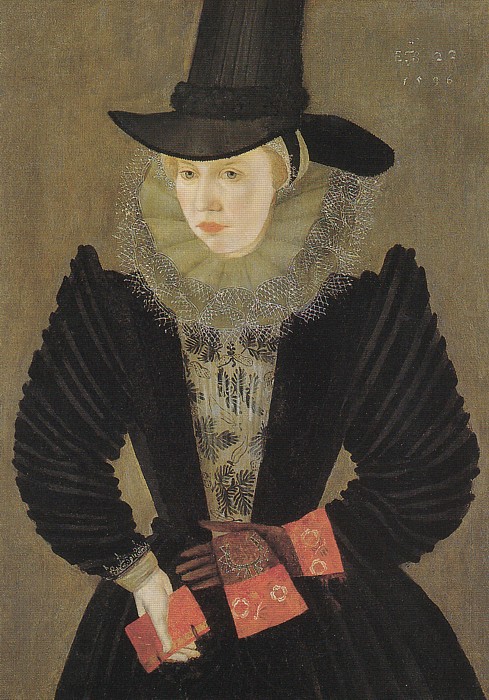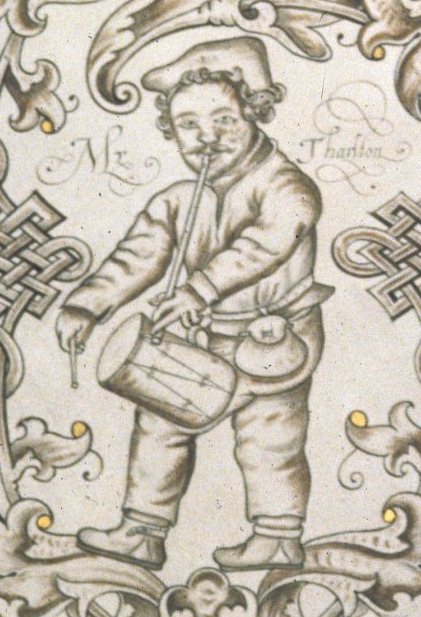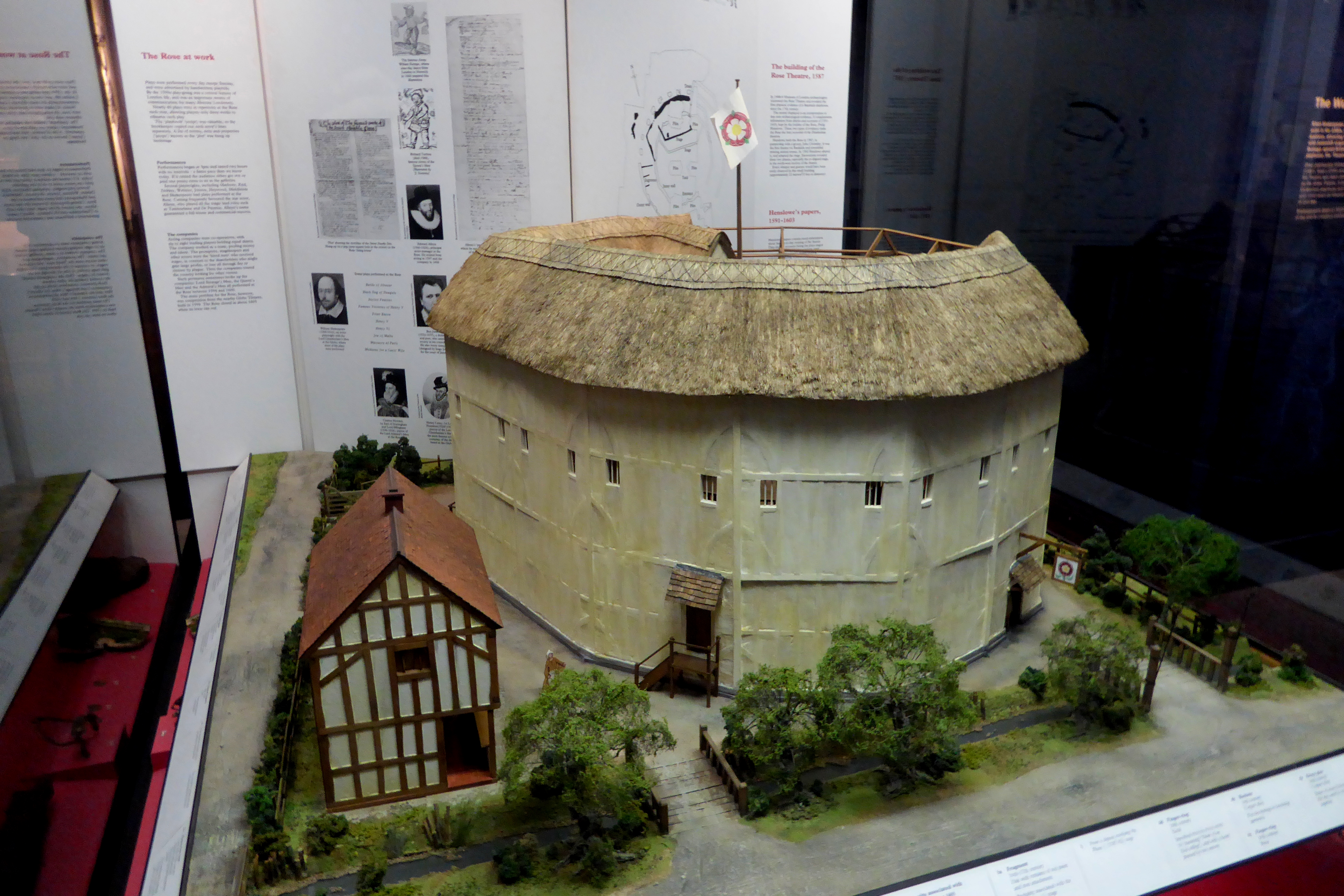|
Admiral's Men
The Admiral's Men (also called the Admiral's company, more strictly, the Earl of Nottingham's Men; after 1603, Prince Henry's Men; after 1612, the Elector Palatine's Men or the Palsgrave's Men) was a playing company or troupe of actors in the Elizabethan and Stuart eras. It is generally considered the second most important acting troupe of English Renaissance theatre (after the company of Shakespeare, the Lord Chamberlain's or King's Men). Beginnings They were first known as the Lord Howard's Men, named after their patron Charles Howard, 1st Earl of Nottingham. The company played once at Court on December 1576 (the play was called ''Tooley''), again on 17 February 1577 (''The Solitary Knight''), and a third time the following Christmas season, 5 January 1578 (all dates new style). They toured widely, from Bath to Nottingham, in the years 1577–79. A powerful patron like Howard could make a great difference in a company's fortunes. Though there is little evidence that he ... [...More Info...] [...Related Items...] OR: [Wikipedia] [Google] [Baidu] |
Playing Company
In Renaissance-era London, playing company was the usual term for a company of actors. These companies were organised around a group of ten or so shareholders (or "sharers"), who performed in the plays but were also responsible for management. The sharers employed "hired men" that is, the minor actors and the workers behind the scenes. The major companies were based at specific theatres in London; the most successful of them, William Shakespeare's company the King's Men, had the open-air Globe Theatre for summer seasons and the enclosed Blackfriars Theatre in the winters. The Admiral's Men occupied the Rose Theatre in the 1590s, and the Fortune Theatre in the early 17th century. Less fortunate companies spent most of their existences touring the provinces; when Worcester's Men gained official permission to perform in London in 1602, they were, in a manner of speaking, "coming in from the cold" of a life of constant touring. Origins The development of theatre in England in ... [...More Info...] [...Related Items...] OR: [Wikipedia] [Google] [Baidu] |
Edward Alleyn
Edward Alleyn (; 1 September 156621 November 1626) was an England, English actor who was a major figure of the Elizabethan theatre and founder of the College of God's Gift in Dulwich. Early life Alleyn was born on 1 September 1566 in Bishopsgate, London; or so it was recorded in the ''Biographia Britannica'' as a product of Alleyn's own writing. Alleyn does record his birth date in a diary several times but does not distinctly identify his birthplace as Bishopsgate. In the St. Botolph parish registers it is recorded that he was baptized on the day after his birth. He was born a younger son of Edward Alleyn with three brothers named John, William, and Edward. His father was an innkeeper and porter to Queen Elizabeth I and his mother, Margaret Townley, was the daughter of John Townley. His mother's link to the Lancashire Towneley (family), Townley family is somewhat of a mystery. Alleyn said she was the daughter of John Townley of Townley but the claim does not easily fit with ... [...More Info...] [...Related Items...] OR: [Wikipedia] [Google] [Baidu] |
Queen Elizabeth's Men
Queen Elizabeth's Men was a playing company or troupe of actors in English Renaissance theatre. Formed in 1583 at the express command of Queen Elizabeth, it was the dominant acting company for the rest of the 1580s, as the Admiral's Men and the Lord Chamberlain's Men would be in the decade that followed. Foundation Since the Queen instigated the formation of the company, its inauguration is well documented by Elizabethan standards. The order came down on 10 March 1583 (new style) to Edmund Tilney, then the Master of the Revels; though Sir Francis Walsingham, head of intelligence operations for the Elizabethan court, was the official assigned to assemble the personnel. At that time the Earl of Sussex, who had been the court official in charge of the Lord Chamberlain's Men in its first Elizabethan incorporation, was nearing death. The Queen's Men assumed the same functional role in the Elizabethan theatrical landscape as the Lord Chamberlain's Men before and after them did: ... [...More Info...] [...Related Items...] OR: [Wikipedia] [Google] [Baidu] |
Richard Tarlton
Richard Tarlton (died 5 September 1588) was an English actor of the Elizabethan era. He was the most famous clown of his era, known for his extempore comic doggerel verse, which came to be known as "Tarltons". He helped to turn Elizabethan theatre into a form of mass entertainment paving the way for the Shakespearean stage. After his death many witticisms and pranks were attributed to him and were published as ''Tarlton's Jests''. Tarlton was also an accomplished dancer, musician and fencer. He was also a writer, authoring a number of jigs, pamphlets and at least one full-length play. Early life Information on Tarlton's family background is meagre. His father's first name is unknown. His mother's first name was Katherine, but her maiden name is also unknown. A later lawsuit establishes that he had a sister named Helen. His birthplace is also unknown, although more than a century after Tarlton's death Thomas Fuller said that he was born at Condover in Shropshire, where his fath ... [...More Info...] [...Related Items...] OR: [Wikipedia] [Google] [Baidu] |
The Isle Of Dogs (play)
''The Isle of Dogs'' is a play by Thomas Nashe and Ben Jonson which was performed in 1597. It was immediately suppressed, and no copy of it is known to exist. The play The play was performed, probably by Pembroke's Men, at the Swan Theatre in Bankside in the last week of July 1597. A satirical comedy, it was reported to the authorities as a "lewd plaie" full of seditious and "slanderous matter". While extant records do not indicate what gave offence, a reference in '' The Returne from Parnassus (II)'' suggests that Queen Elizabeth I herself was satirised. Other evidence suggests that Henry Brooke, 11th Baron Cobham may have been the target. The Isle of Dogs is a location in London on the opposite bank of the Thames to Greenwich, home of a royal palace, Placentia, where indeed the Privy Council met. It was also believed to be where the queen kennelled her dogs, hence the name. David Riggs suggests that the satire might have been related to portrayal of the queen's coun ... [...More Info...] [...Related Items...] OR: [Wikipedia] [Google] [Baidu] |
Pembroke's Men
The Earl of Pembroke's Men was an Elizabethan era playing company, or troupe of actors, in English Renaissance theatre. They functioned under the patronage of Henry Herbert, 2nd Earl of Pembroke. Early and equivocal mentions of a Pembroke's company reach as far back as 1575; but the company is known for certain to have been in existence in 1592. In that year, a share in the company was valued at £80 (more than William Shakespeare would pay for New Place in Stratford-upon-Avon five years later). Shakespeare Some think that Shakespeare spent time as both an actor and writer for Pembroke's Men in the early 1590s. Two of the earliest quarto publications of individual Shakespearean plays are both linked to this company: the title page of the earliest text of ''Henry VI, Part 3'' (1595) states that the play was performed by Pembroke's Men, while the title page of Q1 of ''Titus Andronicus'' (1594) states that that play was acted by three companies, Pembroke's Men, Derby's Men, and Susse ... [...More Info...] [...Related Items...] OR: [Wikipedia] [Google] [Baidu] |
Worcester's Men
The Earl of Worcester's Men was an acting company in English Renaissance, Renaissance England. An early formation of the company, wearing the livery of William Somerset, 3rd Earl of Worcester, is among the companies known to have toured the country in the mid-sixteenth century. A later iteration of the company toured through the 1580s and '90s; little is known about its activities, though in 1583 it included the sixteen-year-old Edward Alleyn, at the start of his illustrious career. By the start of the seventeenth century, Edward Somerset, 4th Earl of Worcester was moving up into the higher levels of the late-Elizabethan social and political structure; in April 1601 he became the Queen's Master of the Horse. It was to add to his prestige that Worcester wanted to bring his players to London. Through the 1590s, only two companies of adult players, the Lord Chamberlain's Men and the Admiral's Men, had been officially allowed in London. Worcester was able to make his company the thir ... [...More Info...] [...Related Items...] OR: [Wikipedia] [Google] [Baidu] |
The Jew Of Malta
''The Jew of Malta'' (full title: ''The Famous Tragedy of the Rich Jew of Malta'') is a play by Christopher Marlowe, written in 1589 or 1590. The plot primarily revolves around a Maltese Jewish merchant named Barabas. The original story combines religious conflict, intrigue, and revenge, set against a backdrop of the struggle for supremacy between Spain and the Ottoman Empire in the Mediterranean that takes place on the island of Malta. There has been extensive debate about the play's portrayal of Jews and how Elizabethan audiences would have viewed it. Characters * Machiavel, speaker of the Prologue * Barabas, a rich Jewish merchant of Malta * Abigail, his daughter * Ithamore, his slave * Ferneze, Governor of Malta * Don Lodowick, his son * Don Mathias, Lodowick's friend * Katharine, Mathias' mother * Friar Jacomo * Friar Bernardine * Abbess * Selim Calymath, son of the Emperor of Turkey * Callapine, a * Martin del Bosco, Vice Admiral of Spain * Bellamira, a courtesan * P ... [...More Info...] [...Related Items...] OR: [Wikipedia] [Google] [Baidu] |
Bubonic Plague
Bubonic plague is one of three types of Plague (disease), plague caused by the Bacteria, bacterium ''Yersinia pestis''. One to seven days after exposure to the bacteria, flu-like symptoms develop. These symptoms include fever, headaches, and vomiting, as well as Lymphadenopathy, swollen and painful lymph nodes occurring in the area closest to where the bacteria entered the skin. Acral necrosis, the dark discoloration of skin, is another symptom. Occasionally, swollen lymph nodes, known as "buboes", may break open. The three types of plague are the result of the route of infection: bubonic plague, septicemic plague, and pneumonic plague. Bubonic plague is mainly spread by infected fleas from small animals. It may also result from exposure to the body fluids from a dead plague-infected animal. Mammals such as rabbits, hares, and some cat species are susceptible to bubonic plague, and typically die upon contraction. In the bubonic form of plague, the bacteria enter through the ... [...More Info...] [...Related Items...] OR: [Wikipedia] [Google] [Baidu] |
The Rose (theatre)
The Rose was an Elizabethan theatre, Elizabethan playhouse, built by theatre entrepreneur Philip Henslowe in 1587. It was the fifth public playhouse to be built in London, after the Red Lion (theatre), Red Lion in Whitechapel (1567), The Theatre (1576) and the Curtain Theatre, Curtain (1577), both in Shoreditch, and the Newington Butts Theatre, theatre at Newington Butts () – and the first of several playhouses to be situated in Bankside, Southwark, in a Liberty (division), liberty outside the jurisdiction of the City of London's civic authorities. Two of the earliest plays by William Shakespeare – Titus Andronicus and Henry VI, Part 1 – are recorded as having been performed there, as well as plays by dramatists such as Christopher Marlowe, Thomas Kyd, Robert Greene (dramatist), Robert Greene, George Peele, Thomas Dekker (writer), Thomas Dekker, Michael Drayton, Ben Jonson and Thomas Heywood. The Rose's archaeological remains were rediscovered in 1989 during the redevelopme ... [...More Info...] [...Related Items...] OR: [Wikipedia] [Google] [Baidu] |
Philip Henslowe
Philip Henslowe ( – 6 January 1616) was an Elizabethan theatrical entrepreneur and impresario. Henslowe's modern reputation rests on the survival of his diary, a primary source for information about the theatrical world of Renaissance London. Life Henslowe was born in Lindfield, Sussex, into a family with roots in Devon. His father, Edmund Henslowe, was appointed Master of the Game for Ashdown Forest, Sussex, from 1539 until his death in 1562. Before Edmund Henslowe's death, his daughter Margaret had married Ralf Hogge, an ironmaster. By the 1570s, Henslowe had moved to London, becoming a member of the Dyers' Company. Henslowe is recorded working as assistant to Henry Woodward, reputed to be the bailiff for Anthony Browne, 1st Viscount Montagu, owner of Cowdray House and Battle Abbey in Sussex. Henslowe married Woodward's widow, Agnes, and from 1577 lived in Southwark, opposite the Clink prison. His elder brother Edmund, a merchant, also owned property in Southwark. ... [...More Info...] [...Related Items...] OR: [Wikipedia] [Google] [Baidu] |
Thomas Lodge
Thomas Lodge (September 1625) was an English writer and medical practitioner whose life spanned the Elizabethan and Jacobean periods. Biography Early life Thomas Lodge was born about 1557 in West Ham, the second son of Sir Thomas Lodge, Lord Mayor of London, by his third wife Anne (1528–1579), daughter of Henry Luddington (died 1531), a London grocer. The year before he was born his father had transferred the ownership the manors of Hawkstone and Soulton to Sir Rowland Hill, publisher of the Geneva Bible and a fellow Lord Mayor. The Lodge family continued some form of association with those manors, and it has been suggested that this was part of the inspiration of Lodge junior's literary output. He was educated at Merchant Taylors' School and Trinity College, Oxford; taking his BA in 1577 and MA in 1581. In 1578 he entered Lincoln's Inn, where, as in the other Inns of Court, a love of letters and a crop of debts were common. Early literary work Lodge, dis ... [...More Info...] [...Related Items...] OR: [Wikipedia] [Google] [Baidu] |





